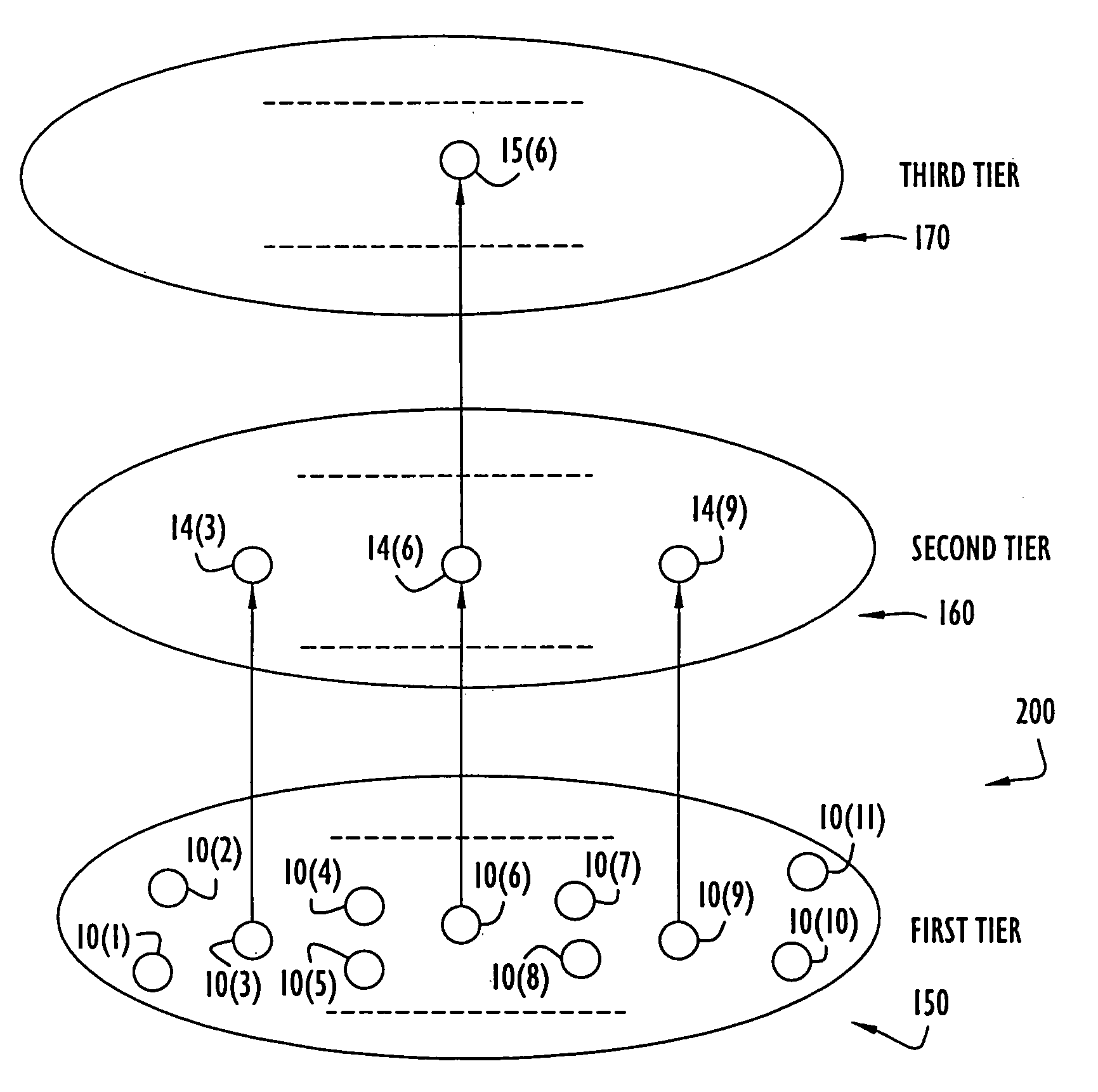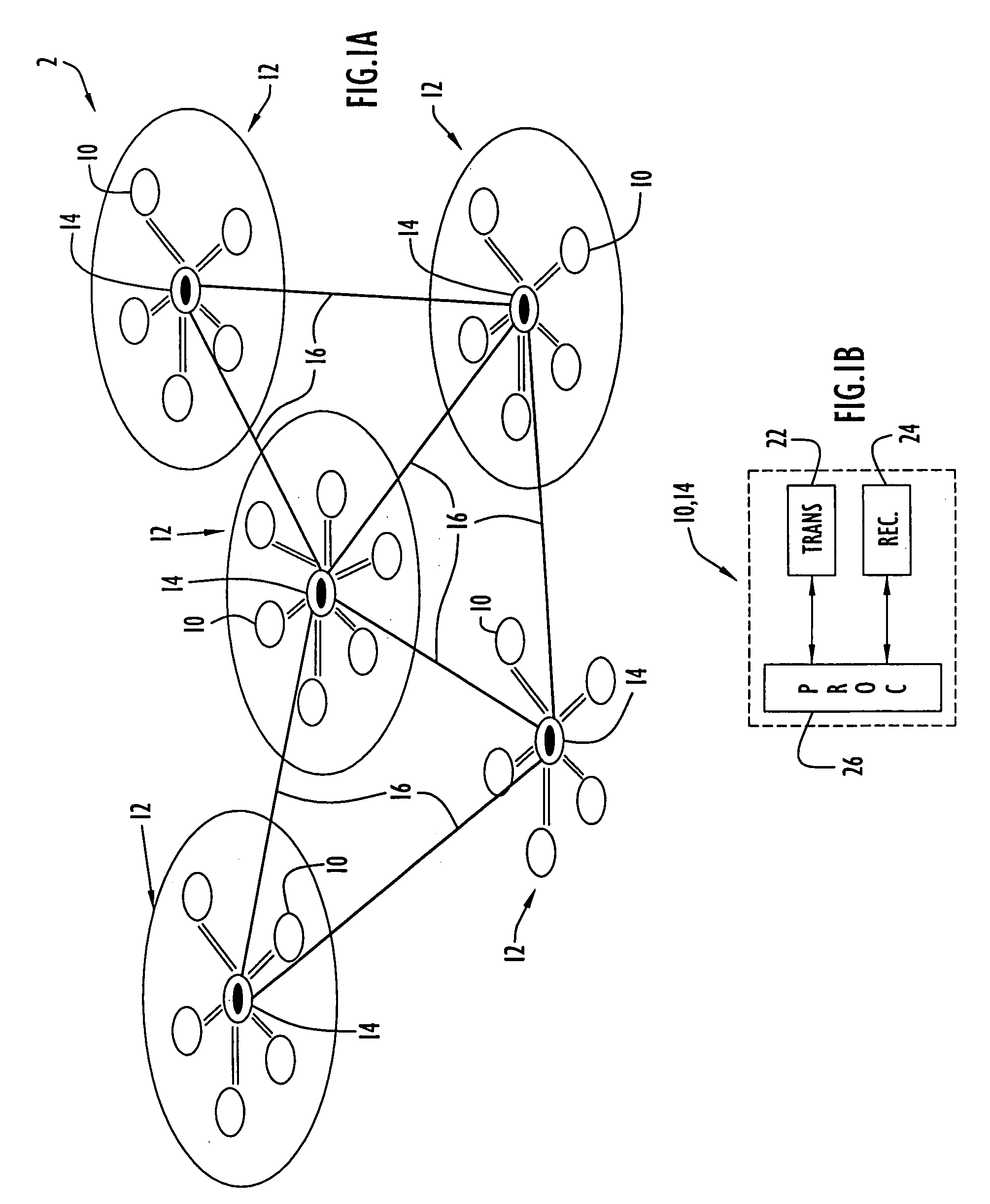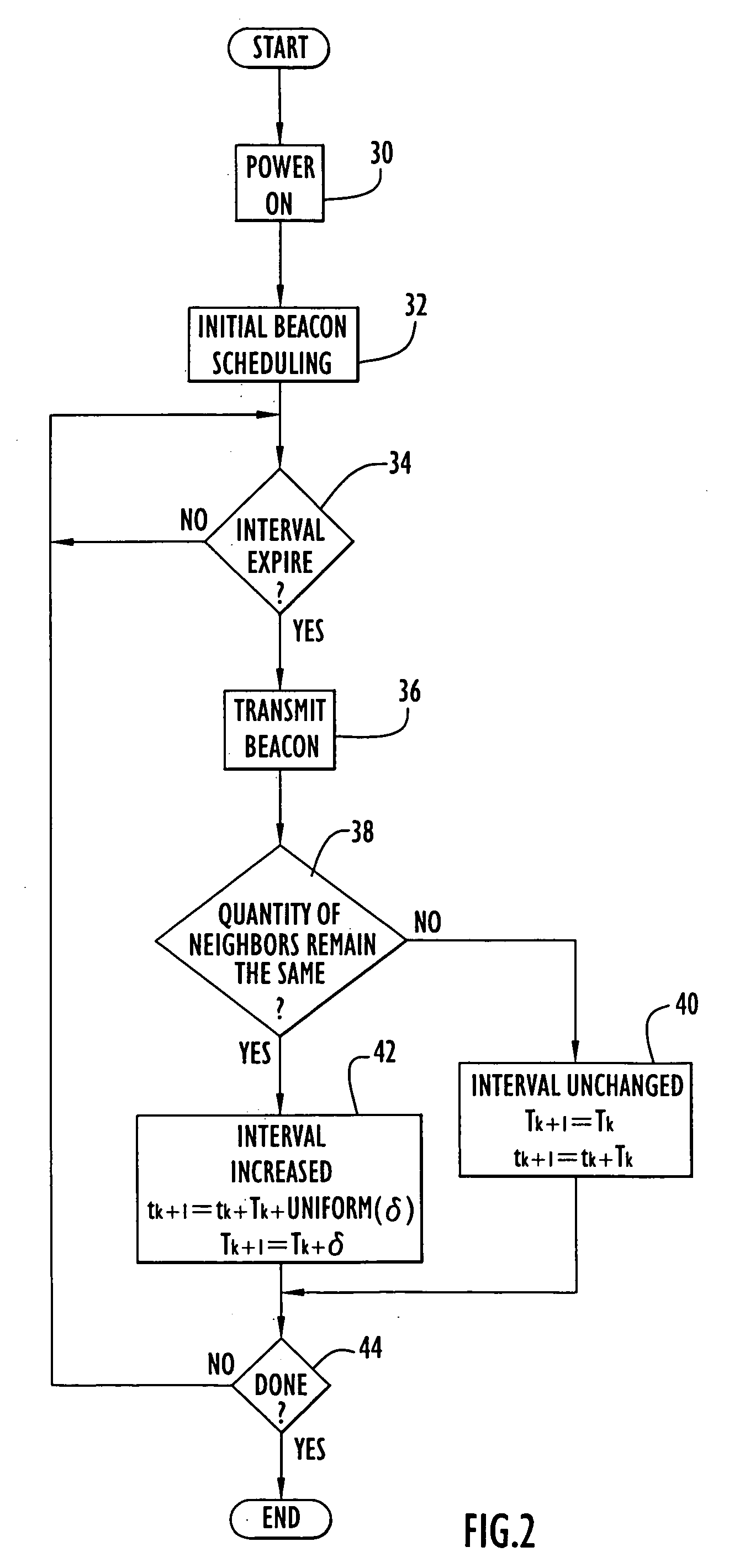Method and apparatus for communication network cluster formation and transmission of node link status messages with reduced protocol overhead traffic
a communication network and status message technology, applied in the field of communication systems, can solve the problems of increasing overhead traffic, affecting the efficiency of communication network cluster formation, and reducing the number so as to facilitate cluster formation and minimize the quantity of hops for data transmission
- Summary
- Abstract
- Description
- Claims
- Application Information
AI Technical Summary
Benefits of technology
Problems solved by technology
Method used
Image
Examples
Embodiment Construction
[0037]Network nodes according to the present invention arranged in an exemplary wireless network are illustrated in FIG. 1A. Specifically, wireless network 2 includes a plurality of nodes 10 arranged in cells or clusters 12 in accordance with cluster formation of the present invention as described below. Each cell or cluster includes corresponding cluster member nodes 10 with one of those cluster member nodes designated as a cluster head node 14. These cluster arrangements form a first tier of network 2 and facilitate communication within a cluster between the cluster head and member nodes preferably utilizing a first transmission frequency. The head nodes of each cluster are in communication with each other, preferably utilizing a second transmission frequency, and form a backbone network 16. The backbone network essentially forms a second tier of network 2 and facilitates communications between nodes of different clusters (e.g., generally providing communications over greater dist...
PUM
 Login to View More
Login to View More Abstract
Description
Claims
Application Information
 Login to View More
Login to View More - R&D
- Intellectual Property
- Life Sciences
- Materials
- Tech Scout
- Unparalleled Data Quality
- Higher Quality Content
- 60% Fewer Hallucinations
Browse by: Latest US Patents, China's latest patents, Technical Efficacy Thesaurus, Application Domain, Technology Topic, Popular Technical Reports.
© 2025 PatSnap. All rights reserved.Legal|Privacy policy|Modern Slavery Act Transparency Statement|Sitemap|About US| Contact US: help@patsnap.com



